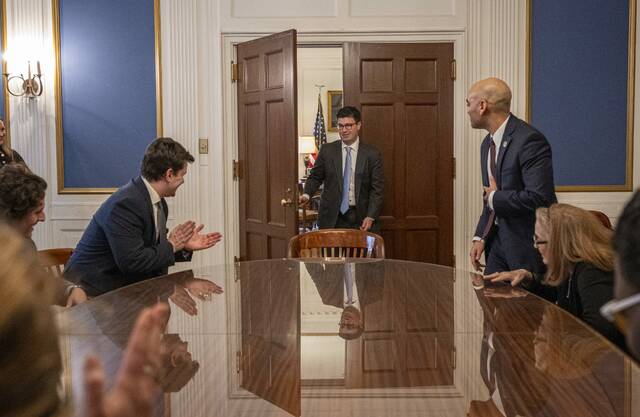One car slams into another at an intersection.
It might be no one’s fault. Slick roads. A blown tire. Something goes wrong, and now there are people that need help.
This scenario has people brought to emergency rooms everywhere every day. It can mean sudden, serious injuries that focus the medical staff on the prioritized needs of the patients. Someone needs blood. Someone needs a surgeon. Someone may be dying.
Now what if it wasn’t two cars? What if it was five? Ten? What if one of them wasn’t a car? What if it was a bus full of people?
That is the scenario that hospitals train to handle. That is the reality that took place at 3:30 a.m. Jan. 5, when a passenger bus went out of control on the Pennsylvania Turnpike near New Stanton, leading to a pileup with three tractor-trailers and a car. Five people died and 55 were injured.
Allegheny Hospital Network’s Forbes Hospital took 11, with 31 going to Excela Health Frick Hospital in Mt. Pleasant and 18 more going to UPMC Somerset.
There is often attention on the training for active shooter events or bomb threats or other incidents where great injury is visited on people because of evil or anger. Schools prepare for them. Police prepare, as do fire departments and emergency management agencies.
And hospitals do too, because they might get the casualties or the accused, as Allegheny General Hospital did when Tree of Life shooter Robert Bowers was treated.
The real likelihood with a hospital, however, is something just as tragic but more commonplace, like the heartbreaking possibility of a major traffic incident. It has happened before, and is sadly likely to happen again.
That is why when it does happen, what works right is the bright spot in a dark day. Because people took time to think of what could go wrong, staff are prepared to do what needs to be done quickly, efficiently and well.
While people can occasionally lament local hospitals becoming subsidiary branches of larger health systems, major emergencies can be the place where corporate layers of policy, practice and proactive planning shine. The Greater Pittsburgh area is lucky to be not so much a hub of one system, but a clock where the gears of several can sometimes work like a well-oiled machine.
Individual patients depend on hospitals and medical workers every day. It is good to know that in the odd hours when the unexpected and incredible occurs, the mass casualties can depend on them, too.








